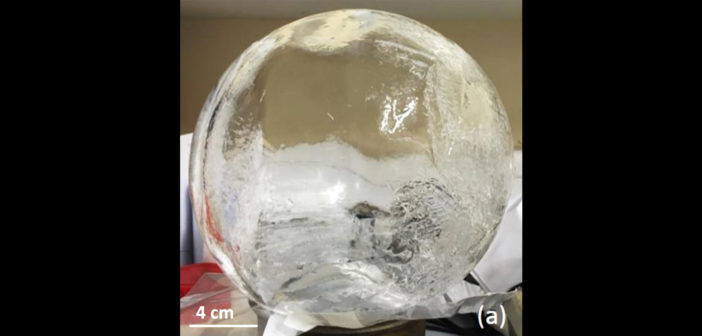You’re looking at a frozen, hollow shell of ice roughly 20 cm in diameter and 3 cm thick. In a new laboratory study, scientists Kathryn Harriss and Mark Burchell (University of Kent, UK) have studied what happens when a shell like this is shot with a small, high-speed projectile, causing the ice shell to explode into pieces. You can watch a slow motion video of their experiment below!
This process simulates the possible high-speed collisions and catastrophic disruptions of icy bodies — like the frozen moons of Saturn and Jupiter — in the early solar system. By exploring how a hollow ice sphere responds to impact, Harriss and Burchell hope to better understand the relative roles of a body’s core and its surface layers in determining what happens during a catastrophic disruption. Which is more important in a collision: an icy object’s crust or its core? Check out the original article, linked below, for more information on what the authors learned.
Citation
“Catastrophic Disruption of Hollow Ice Spheres,” Kathryn H. Harriss and Mark J. Burchell 2020 Planet. Sci. J. 1 19. doi:10.3847/PSJ/ab8f34
